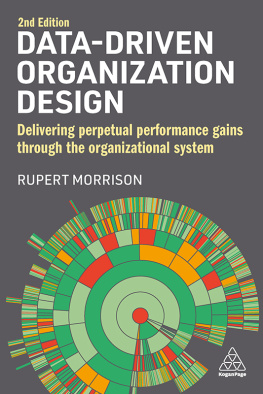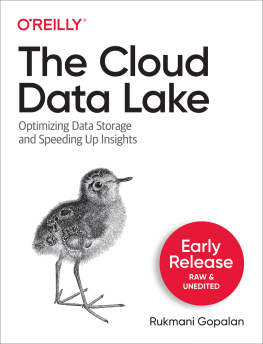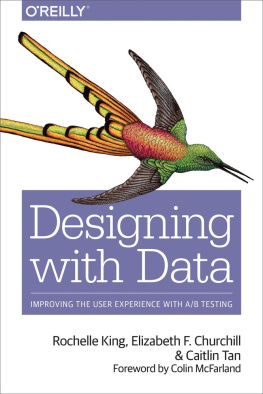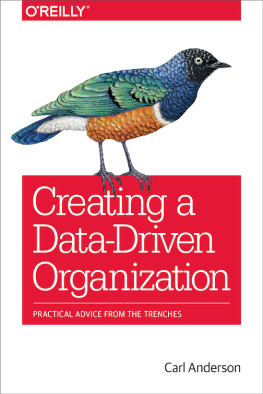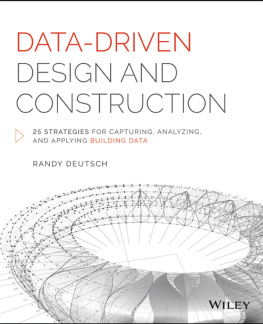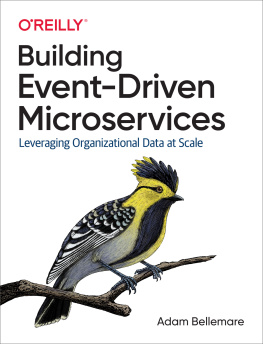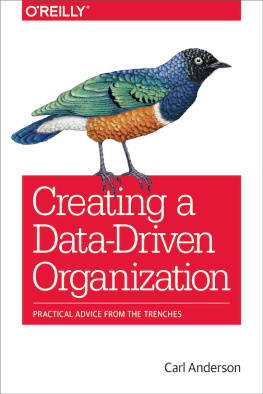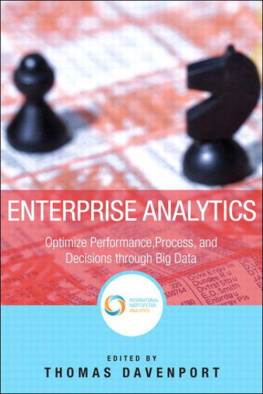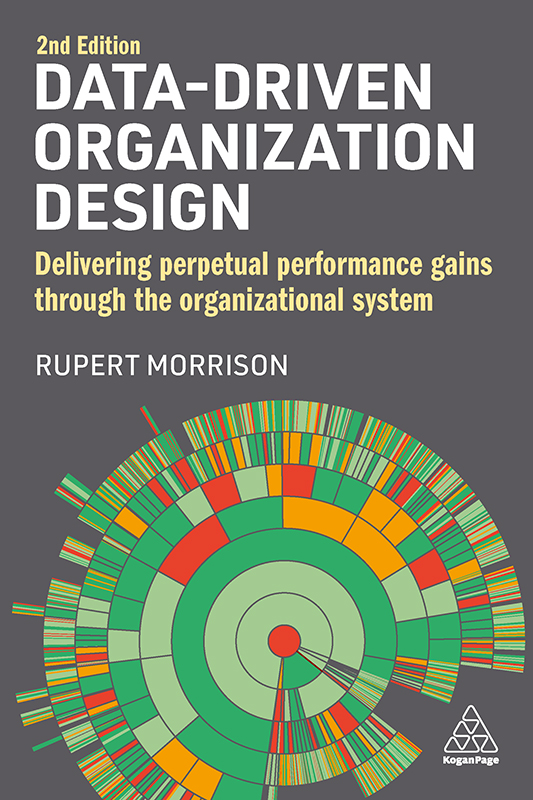
Contents
Landmarks
List of Figures
Page List
PRAISE FOR DATA-DRIVEN ORGANIZATION DESIGN
Youve certainly heard the term digital transformation. Yet being more digital or collecting more data wont get you very far if there arent methods and tools to better inform the management process. The second edition of Data Driven Organization Design renews its focus on the most important asset of any organization: its people. It covers everything you need to easily master the concepts, leverage the data, communicate effectively, and successfully make the positive changes necessary to adopt a data-driven organization design.
Stphane Hamel, Academic Advisor, Faculty of Business Administration, Laval University
Brilliant. Theres a well-thumbed copy of the first edition of Data-Driven Organization Design on my bookshelf, and this timely update by one of the genuine thought leaders in our field provides a masterful template for HR leaders looking to drive innovation and value to their business. If you are looking to turn organizational design theory into practice and align it to data then this is the book for you.
David Green, co-author of Excellence in People Analytics, Managing Partner at Insight222 and host of the Digital HR Leaders podcast
As technology continues to automate work and radically change business models, organization design has become one of the biggest issues on the minds of CEOs. Data-Driven Organization Design is a bible on this important topic, and I recommend it for all HR and business leaders.
Josh Bersin, global industry analyst
We live in a constantly changing world. The pace of change is just going to increase and is now a constant that we all need to live and work with. To be successful in this environment, businesses need to be able to adapt their own operating model, organization design and people strategy not only to respond to these changes, but to pre-empt them. Key to being able to do this is having access to live data that can help inform the changes that could be made, quickly identify the business benefit of doing so and equally the implications of not doing them. An organization then needs the tools and the culture to make the required changes at pace, taking into consideration the people impact. This book is a must-read for those looking to enhance their business (and people) performance.
Annette Andrews, Interim Group Chief People Officer, Impellam Group
A practical and compelling guide to data-driven organization design that offers leaders a way of understanding and reshaping their businesses. More than that, it offers something more valuable: a framework not just to make change, but to constantly evolve.
Greg Williams, Deputy Global Editorial Director, WIRED
A powerful playbook for organization design, where strategy, organization and people are aligned using insights from data. Rupert makes the theory accessible and practical by including his self-lived experiences in a case study running throughout the book. Separating macro and micro design is invaluable. Micro design is underrated in organizational theory. While hard work, its potential is enormous as it allows for continuous change without disruption. This book shows that when done well, micro design helps to build both consistency and culture.
Pr strm, President Gardena Division, Husqvarna Group.
Anyone leading or planning to lead a large business, or who has led a large business in the past does eventually learn how vital to an organization it is to have clear strategy, role design and accountabilities. Morrison connects theory and practice in an accessible way. He has a unique perspective having been a student of the theory, and crucially, having lived through the practice. More important than culture, strategy, finance or marketing, is the way in which senior management in a business structure, plan, organize and effectively manage their most valuable asset, their colleagues.
Ian Kantor, Founder, Investec
In a world filled with uncertainty, Data-Driven Organization Design is a welcome resource for HR executives who care about building the right organizational structure to compete and win. Rupert offers a framework for identifying the real challenges in organizations, gives clarity to the ambiguity of aligning human behaviour, and lays out solutions that are both actionable and measurable. If you feel like your business has stagnated or your people are not bringing their best thinking to work, D-DOD will give you new insights to reimagine your organizational structure in a way that allows it to evolve with market conditions, adapt with new talent and ideas, and ultimately thrive a goal on every CEOs wish list.
Beau River, Partner at Vantage Leadership Consulting and Adjunct Lecturer at Northwestern Universitys Masters of Science in Learning and Organizational Change
Ever wondered about how to approach designing an organization to get the right people in the right place with the right skills doing the right work in the right way? If so then this richly informative book is for you. With high energy, infectious enthusiasm and vast knowledge, Rupert Morrison shows how good data, thoughtful analysis of it, and careful implementation of the insights it yields, provide the bedrock for design success.
Naomi Stanford, organization design author and consultant
This book is the compendium of exceptional ideas with impact. By connecting the six components of an organization with data, organizations will continue to deliver value to all stakeholders. Thorough, timely, and relevant!
Dave Ulrich, Rensis Likert Professor, Ross School of Business, University of Michigan, and Partner, the RBL Group
It is about time we shift our thinking from static organization structures to dynamic systems. A must read if you are looking for a practical guide to understand how different parts of the organization continuously confluence together to drive business outcomes.
Shradha Prakash, VP, Future of Work, Org Design and Talent Enablement at Prudential Financial
Every organization has a Financial Planning & Analysis capability. Until Data Driven Organization, I had found it impossible to get ahead of the ever-changing organization. The concepts, practices, and visualizations in this book convinced me that organizational planning is possible and that we can analyse, design, and plan organizations to meet their objectives
Ana Coronel, VP Organization, Transformation & Global Services, IGT
Contents
LIST OF FIGURES
Rupert Morrison is an entrepreneur, economist and visionary in data-driven organizational management.
From bucolic beginnings on a sheep station in Wairarapa, New Zealand, after studying economics Rupert started his career in management consulting, focusing on supply chain, organization design and transformation work with many of the worlds largest companies in multiple sectors (automotive, FMCG, mining, government agencies, pharmaceutical and private equity). This work led him to believe businesses were missing out on the opportunity to take greater control of these programmes in a more sustainable and data-driven way through the use of technology.
This belief inspired him to found software solutions company Concentra Analytics Limited in 2008, and to launch orgvue the organizational design and planning platform in 2011. Under his steer, the firm has become one of the fastest-growing technology companies in the UK (
Next page
